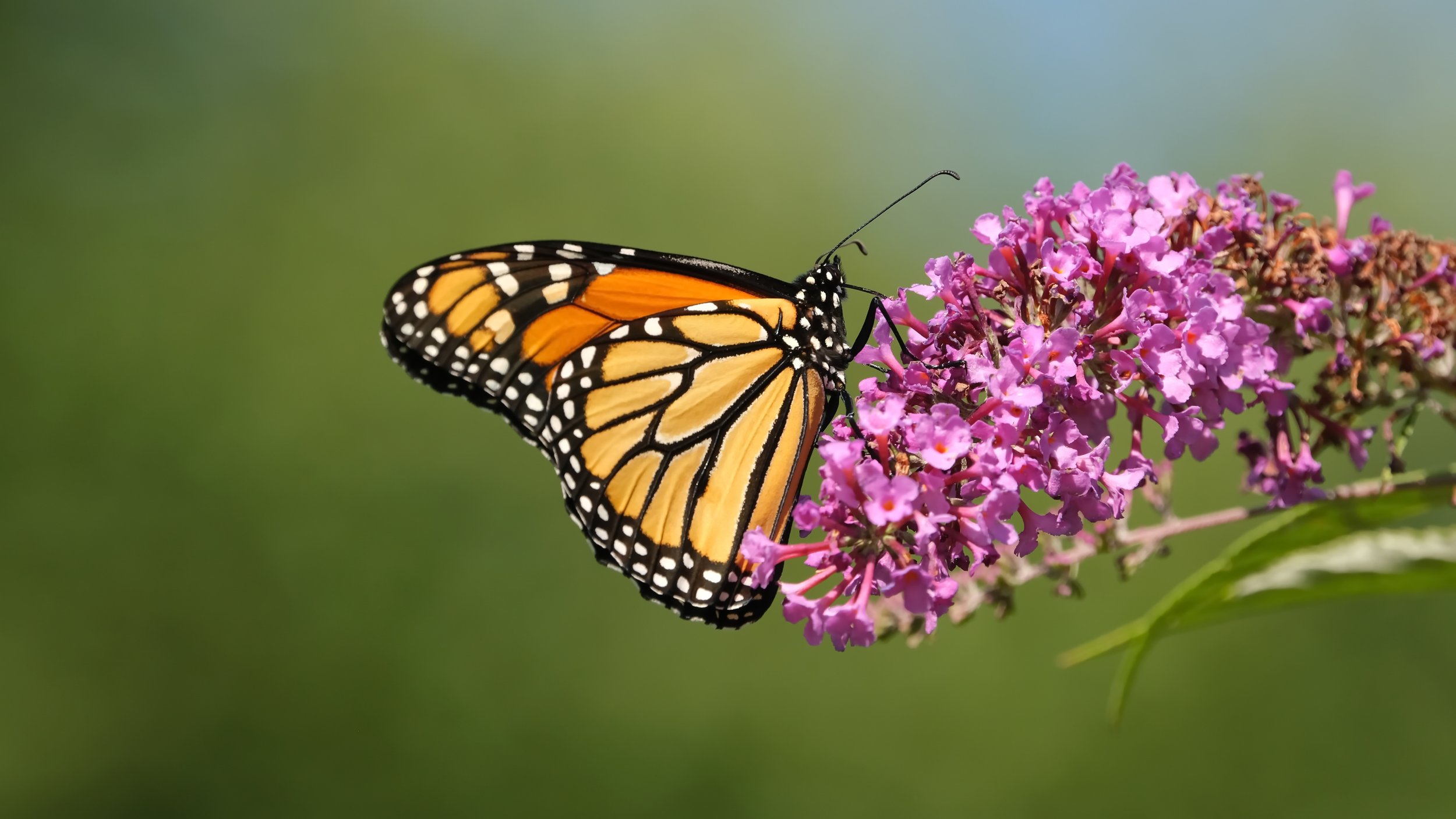Create a Pollinator Friendly Landscape
About 75% of the world’s flowering plants rely on insects and animals for pollination, including plants that supply us with healthy and nutritious food. With pollinator populations on the decline, providing habitat and food for pollinators is more important than ever. Here’s how:
Choose Native Plants
Native plants attract native pollinators – when you have a choice, choose native varieties. The food and habitat they provide is better suited to the native pollinators’ needs.
Spring Cleaning
Fallen leaves and plant stalks provide nesting material and winter shelter for pollinators. Wait until spring and until your soil temp reaches 50ºF to clean up your garden. This allows time for pollinators to come out of hibernation.
Plant in Clusters
Pollinators typically visit the same species on a single trip. Consolidated plant groupings provide a large area to attract pollinators and make each trip more efficient.
Show Your Colors
Choose a mix of shrubs and flowers with a variety of colors. And find plants that provide consecutive blooms throughout the growing season to maintain a stable food supply.
Provide a Host
Flowers provide food but providing plants that also host the life cycle of pollinators is also important. Milkweed for example provides food for the caterpillar and nectar for the butterfly.
Plants From Producers We Love
Deep Rooted Organics
Annuals, perennials, native plants, vegetables and herb seedlings.
Agrecol Native Nursery
Native seed and plants grown from collections gathered primarily in South Eastern Wisconsin.
Bluffview Greenhouse
Flowers, herbs, perennials, planters and baskets.
The Flower Barn
Annuals, perennials, hanginging baskets, and planters.
Thoreau Greenhouse
Annuals, perennials, native plants, edibles, and medicinals.
River Root
Vegetable and herb seedlings.
Levi Miller
Sweet potato slips.
The VFC has over 80 feet of pollinator gardens and other green spaces throughout our walking paths and parking lot. This month, be sure to enjoy the blossoms on the flowering crab apple trees before they are gone!



